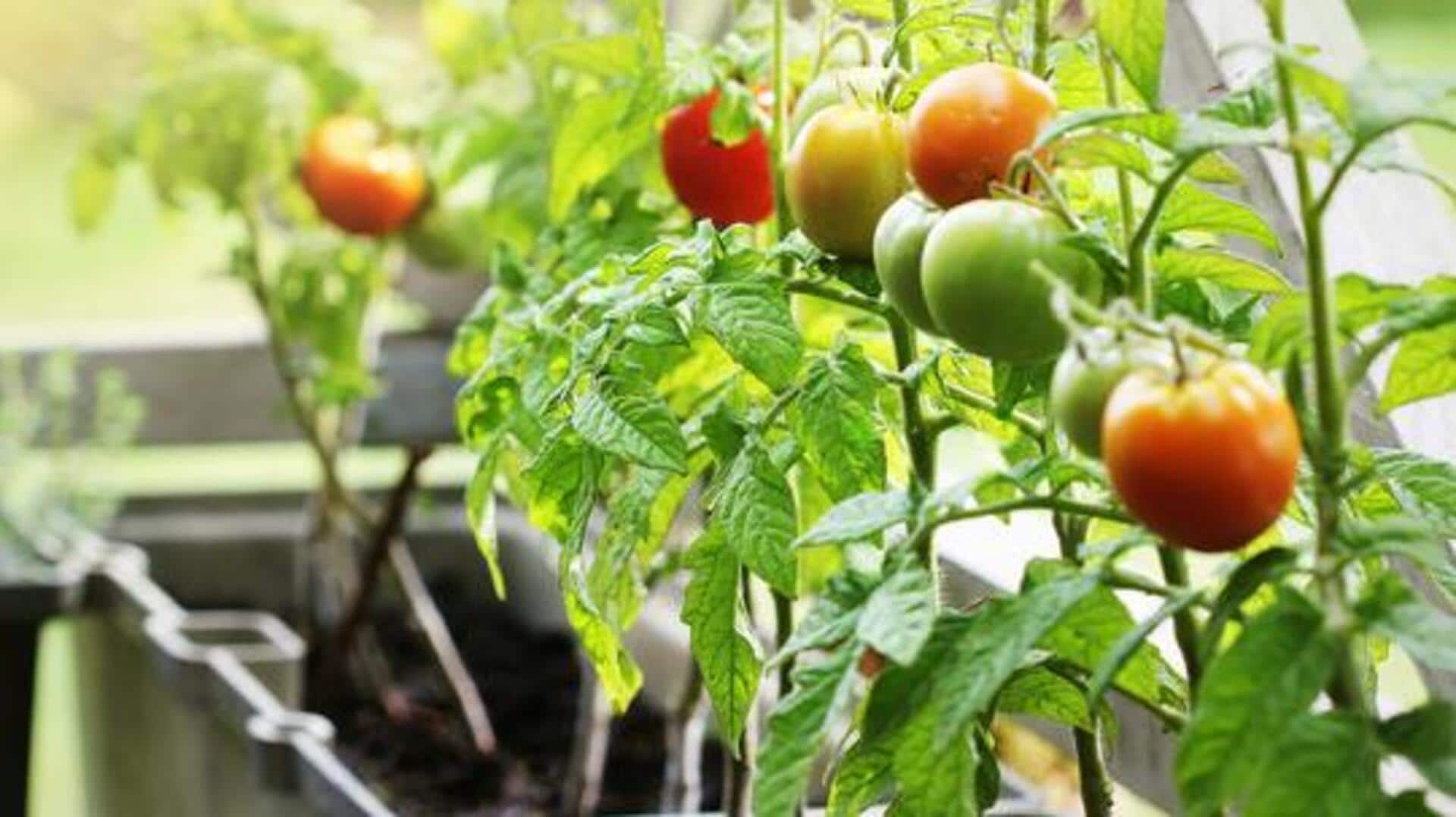
Backyard farming: 5 techniques to grow your own food
What's the story
As backyard farming rises in Africa, it provides a sustainable means of producing food and reducing costs. With space and resources at a premium, innovative methods are being devised to increase yield efficiently. These techniques not only help reduce food bills but also promote self-reliance, providing viable options for both urban and rural populations across the continent.
Vertical gardening
Vertical gardening for space efficiency
Vertical gardening is the perfect technique for limited space. By growing plants vertically on walls or trellises, you can grow more crops in a smaller area. This technique particularly works well for vegetables like tomatoes, beans, and cucumbers. It allows better air circulation and sunlight exposure, resulting in healthier plants and increased yields. Not to mention, vertical gardens can be made with recycled materials like old bottles or wooden pallets, keeping costs low.
Container farming
Container farming with recycled materials
Container farming employs pots for growing plants, making it perfect for cities with bad soil. Recycled products such as plastic bottles can be used as inexpensive containers. Plants like herbs, lettuce, and peppers, which have shallow roots, grow well in this method. It also allows the plants to be moved around to soak up maximum sunlight.
Aquaponics
Aquaponics: A symbiotic system
Aquaponics blends aquaculture with hydroponics to create a symbiotic ecosystem. Here, fish waste nourishes plants, while plants filter the water for fish. This closed-loop ecosystem uses much less water than traditional farming practices. It can be established using inexpensive resources such as PVC pipes and tanks. Leafy greens like spinach and kale thrive in aquaponics systems owing to their nutrient requirements.
Composting
Composting for natural fertilizers
Composting is an eco-friendly way to convert organic waste into a nutrient-rich fertilizer, improving soil quality drastically without chemical inputs. By collecting kitchen scraps like vegetable peels and garden waste, letting them rot over time, you compost. When mixed into planting beds/pots before sowing seeds/transplanting seedlings, it leads to healthier plant growth. It has no additional costs (other than initial setup), using locally sourced organic matter from your own community.
Rainwater harvesting
Rainwater harvesting systems
Rainwater harvesting is all about collecting rainwater from rooftops during rains, storing it for use in irrigation purposes during dry periods, thus reducing dependency on municipal supplies and conserving precious resources at the same time. Simple setups include gutters leading to barrels/drums placed strategically around the property in catchment areas, to ensure maximum collection efficiency possible, given the prevailing climatic conditions, regionally speaking, of course.